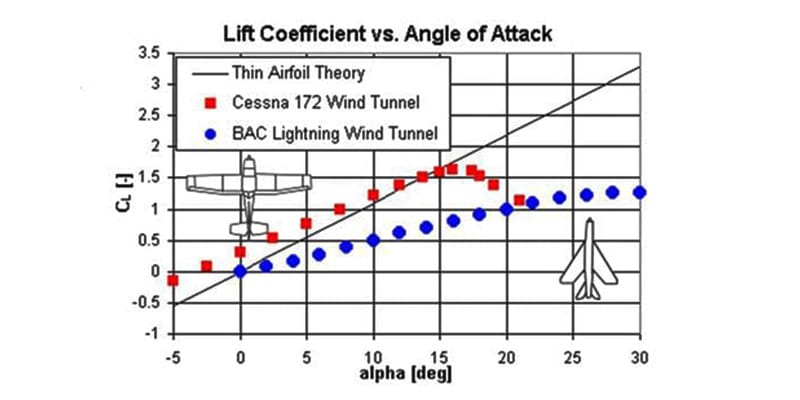Lift & Drag

Surely you have seen an airplane of some description. With 2.5 million people, traveling daily across more than 29 million square miles of airspace (source: FAA), it is difficult to imagine a world without air travel.
But how do we send these large metal birds into the sky and transport people and cargo to their destinations at high speeds without falling to the ground like a tube-shaped cannonball? We use wings and engines to suspend these magnificent machines in the air. But how do they work? Two human-made forces, lift, and thrust, must overcome two natural effects, gravity, and drag.
In short, Gravity is the force that pulls us down toward the earth. Drag is the resistance when a moving object experiences from pushing air out of its way. These basic definitions will help you see the importance of lift and thrust.
Thrust is a force produced, on a plane, by an engine that, in one way or another, pushes air rapidly around it (like a traditional internal combustion engine powering a propeller) or sucking and ejecting air directly through it (like a primary jet engine). The pure force of the wind pushed backward causes the plane to be pushed forwards reliably on the ground and in the air at any altitude in the earth’s atmosphere.
This pushes us forward but does not keep us in flight. We move the air, and the plane, but now we need to manipulate the air to overcome gravity. This is why we have wings, which produce lift. Arms are designed to manage the air downwards, which puts the opposite effect on the hook: an upward force called lift. Wings come in many different shapes and sizes to provide the right amount of lift needed.
Some planes, like gliders and barnstormers, are very light and go at relatively low speeds. They use small wings designed with a high arch to keep them light, agile, and easy to fit in tight places while making all the lift they need. Many commercial planes are large and heavy and need to travel fast, and so they use more massive wings with a relatively smaller arch to fly faster while providing adequate lift and they are swept back like an arrowhead to let the plane reach higher speeds.
Supersonic planes with a variety of goals can’t produce a lot of lift at speed, or the force of the quickly-moving air will shear the traditionally-shaped wings right off. They are forced to use long and mostly flat arms to stay together and maintain control at high speed, sacrificing their low-speed ability. Every different wing shape has distinct advantages and disadvantages, and each plane’s wings are designed specifically for that purpose.
The engine’s thrust is controlled by pilots and many advanced computers on board that allow the plane to accelerate and maintain speed at will. The flaps on the wings are also monitored to allow the aircraft to take off, fly, and land in complete control. Thrust adjustments, as well as flap angles, alter the pitch, speed, and flying characteristics of the plane to make it fly freely in just about any direction.
Here, this graph starts us off with two planes: a small light aircraft, the 172, and a fighter jet, the Lightning. At a low angle of attack (angle the plane points as compared to the earth’s surface), the 172’s powerful, compact wings produce a large amount of lift. However, once the angle of attack increases past 15 degrees, the aerodynamics of the sides fail to deliver lift well. The Lightning’s more significant, sleeker wings can make the adequate lift and surpass the 172’s efficiency at high angles.
You can also read:-Tips to Help Your Child Learn To Like Reading
